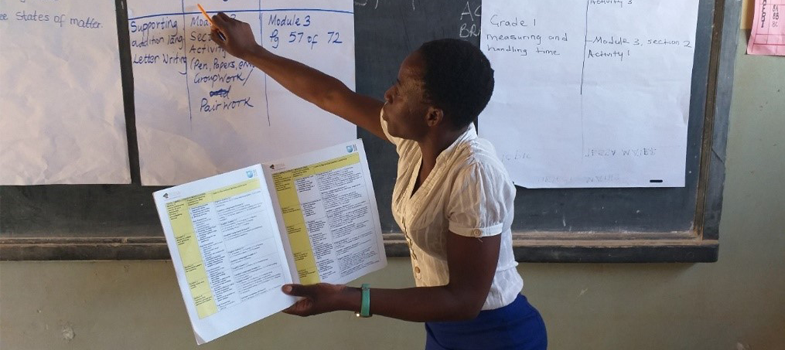Training guide
4. Using TESSA resources
4.1. Explaining a TESSA section
All 75 TESSA sections follow the same pattern as shown by Table 2 below. Each section is designed to develop teachers’ practice through engagement with activities in their classroom. Each activity is expected to take one or two lessons at the most (unless it specifies longer).
Table 2: Content of a TESSA section
|
Key Focus Question |
This is addressed to the teacher and summarises the area to be studied in the section. |
|
Learning Outcomes |
Each section has up to three learning outcomes for the teacher. These focus on the development of classroom skills in the context of the curriculum of that module area. |
|
Introduction |
The introduction sets the scene. It outlines the classroom skills to be developed by the teacher and the curriculum content area for the section. |
|
Narrative |
The narrative provides a rationale for the case studies and activities and highlights the purpose of each. |
|
Case Studies |
A section has three case studies, each linked to a particular activity. The case studies illustrate ideas and concepts by describing how one teacher has approached the linked activity or similar activity in their classroom. They often focus on one particular aspect of the activity or on a particular classroom situation. |
|
Activities |
The three activities are for the teacher to undertake in their classroom with learners or in the wider school and community. The activities build towards the final activity, known as the key activity. The activities are learner centred and engaging for learners. Some activities are very short, whereas others are projects taking several weeks. Most take one lesson to complete. |
|
Resources |
Each section has up to six supporting resources. These take a variety of forms including web links, articles, images, stories, posters, examples of learners’ work, detailed lesson plans, poems and worksheets and template documents. They aim to enrich the teachers’ learning and support the activities. They also support the development of different dimensions of a teacher’s knowledge base, including:
A few of the resources are intended for use with learners. Icons are used to show the core purpose of a resource. These are:
|
Activity 4.6: Getting familiar with TESSAThe purpose of this meeting is for you to work together to become familiar with the TESSA resources. Once you understand the format and the layout, you will able to find many examples of classroom activities that can be adapted for your age group and subject. Watch the short video which explains the TESSA Resources. Choose one TESSA subject. There are three modules for each subject. Working in a group of three, choose one of the modules and look through Section 1 in detail. You will notice that each section has three activities, three case studies and six resources. Each of you should read one activity, one case study and two resources. Write down all the teaching approaches that are used. Now compare the list you have made of teaching approaches with your colleagues in your group. Write down at least one idea that you could use or adapt to use with your class. If there is time, look at Section 2. |
